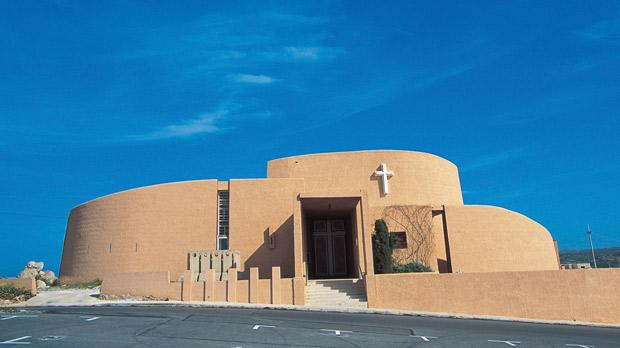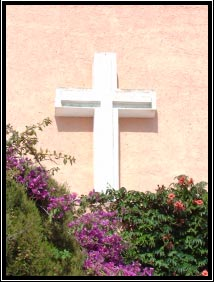Manikata Church
Hen the old chapel of St. Joseph was found to be small for the community of Manikata, at the beginning it was decided to enlarge the church, but later it was found to be impractical and so, it was decided to build a new and larger church.
In 1961, it was decided to build a new and larger church, the rector Fr. Manwel Grima approached architect Edwin England Sant Fournier to prepare a design for the new church. However, shortly afterwards Edwin handed over the job to his son Richard England. Before the design on the new church could be accepted by the people of Manikata, there was a lengthy discussion and explanation over the subject. So eventually the villagers got what they wanted, but in a very different form to what they originally expected.1
The building of the new church of Manikata faced a numerous problems. Firstly there was the very restrictive budget of just £m20,000 to execute the project; this was made possible by organising various fund-raising activities locally and through donations. Secondly there was the untimely death, in 1971 of Fr Grima.2


The first stone was laid by Archbishop Sir Michael Gonzi, but after the death of Fr. Grima the church remained half built for five years. Work commenced on the new church when Fr. Lino Grech was appointed the new rector of Manikata. The building of the church faced not only the lack of monetary resources but also the problem in getting skilled labour to carry out the work. Architect Richard England himself had to set out the plan of the building, and was closely involved in choosing many of the stones used in its construction; in particular the stone needed to erect the screen wall behind the altar, which was brought from the local fields and quarries west of Mġarr. The people of Manikata helped to build their new church as they had done fifty years earlier.3
Manikata’s new church was blessed on 29 November 1974 by Archbishop Sir Michael Gonzi, more than ten years after he officially had laid the first stone. There were a number of festivities and these continued over the weekend.4
Reference :
1. Charles Knevitt, Manikata: The making of a Church, p 12.
2. Ibid, pp 12-13.
3. Ibid, p 13.
4. Ibid, p 14.